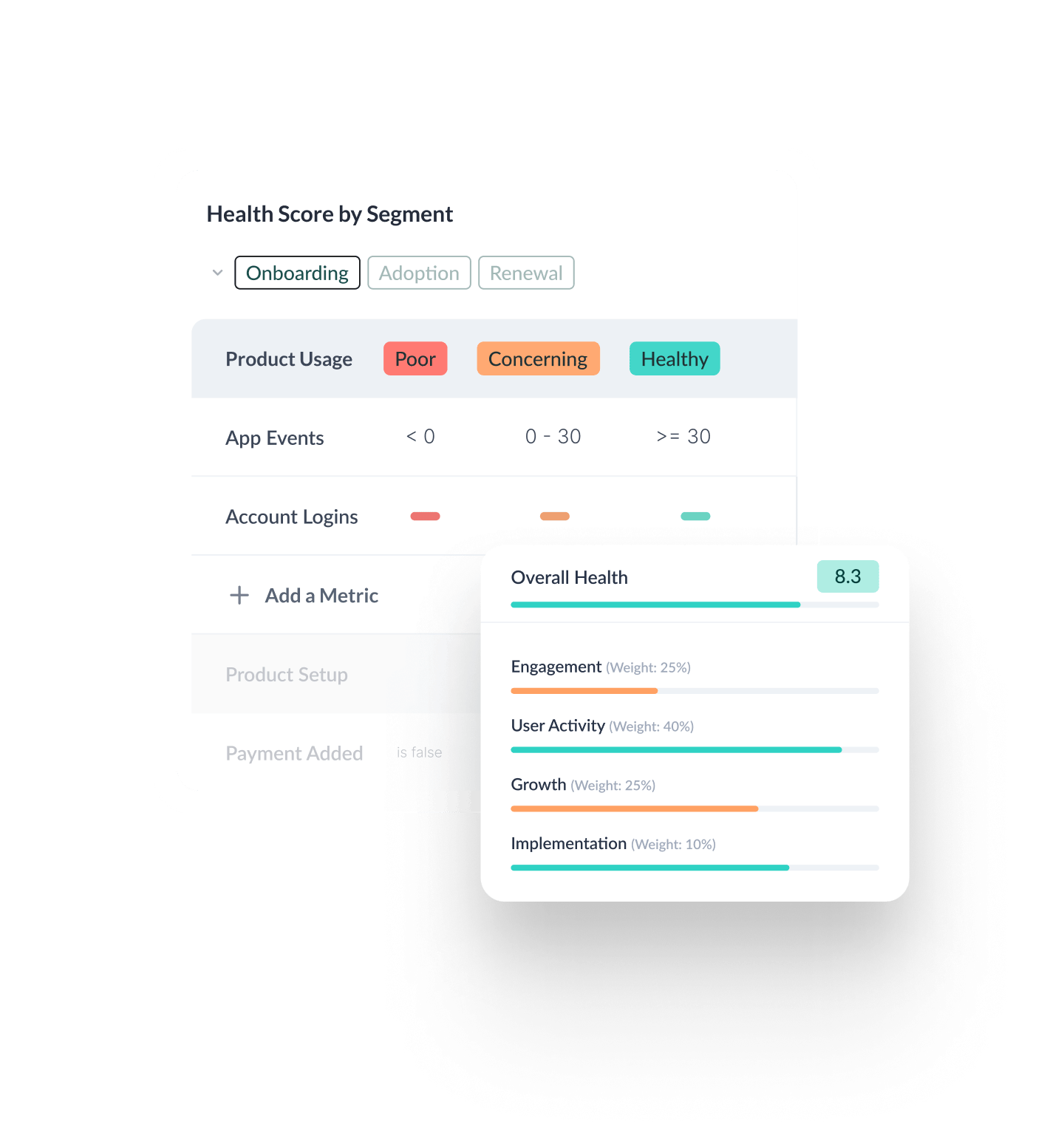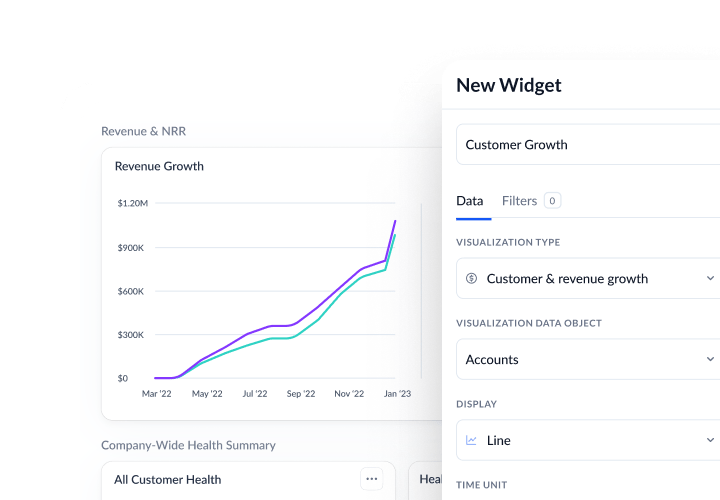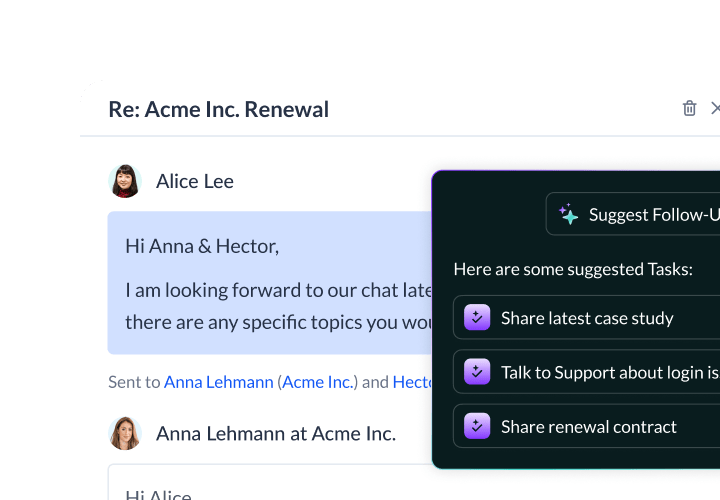Vitally Features
Customer Health Score Software
Collect data, customize, and track your customer Health Score with Vitally’s Customer Success Platform.





Track Your Customers’ Health
Build your custom Health Score model and adjust metrics and measurements based on lifecycle stage, segment, and more.
Create dynamic, multi-factor Health Scores based on traits, metrics, and engagement — fully customized by segment, stage, or team.
Easily build and refine your scoring logic with threshold rules, weightings, and previews — all with an easy-to-use Health Score builder.
Automatically launch emails, tasks, and alerts the moment a customer’s health shifts — turning insight into action at scale.
600+ CS Teams Are Scaling With Vitally














FAQ
Why do Customer Success teams need health score software?
Customer Success teams rely on health score software to proactively manage customer relationships and reduce churn. Without a centralized, data-driven view of customer health, teams are left reacting to issues only after they escalate — which puts renewals, expansion, and long-term customer value at risk.
Health scoring software helps teams define and monitor the signals that matter most — such as product adoption, engagement trends, support volume, and customer feedback — in real time. By consolidating these signals into a single score, CS teams can quickly prioritize at-risk accounts, personalize outreach, and take timely action to improve outcomes.
What should be included in a customer health score?
A well-rounded customer health score should combine both quantitative and qualitative signals to paint a full picture of customer engagement and satisfaction. This typically includes product usage metrics (e.g., login frequency, feature adoption), engagement data (e.g., meeting attendance, email responsiveness), support interactions (e.g., open tickets or escalations), and customer-specific traits (e.g., segment, renewal date, revenue).
In Vitally, health scores can also incorporate Success Metrics (e.g., goal completion), custom traits, and even AI-driven insights — allowing teams to define exactly what “healthy” means for their business. The more contextually relevant the inputs, the more predictive and actionable the health score becomes.
How does Vitally calculate customer health scores?
Vitally’s health score engine is highly flexible and no-code, allowing teams to define scoring rules based on any combination of metrics, traits, activities, and customer events. Each input can be weighted differently, thresholded, and combined using logic rules to fine-tune accuracy. You can preview how these rules would impact real accounts before going live — giving you full confidence in your scoring model.
Health scores are updated in real time as data changes across the platform — whether that’s a new support ticket, product event, or lifecycle stage. This enables teams to immediately spot trends, respond to risk signals, and automate follow-ups through Playbooks, tasks, or alerts — all without manual work.
Can I create different health score models for different customer segments?
Absolutely. In Vitally, you can create and manage multiple health score profiles, each customized for a specific segment, plan type, lifecycle stage, or region. This ensures that what counts as “healthy” for a small startup doesn’t get unfairly applied to an enterprise customer — and vice versa.
Each profile can include different inputs, thresholds, and weightings to reflect the unique behaviors and expectations of the customer group it’s targeting. Teams can then filter and view health scores within their own context, making reporting and prioritization far more accurate across your CS org.
What happens when a customer’s health score changes in Vitally?
When a health score changes in Vitally — for better or worse — it can automatically trigger workflows that help Customer Success teams take immediate action. For example, a drop in health might create a task for the CSM to follow up, fire off a Playbook to address known risk factors, or notify leadership via Slack or email.
Conversely, improvements in health can trigger expansion workflows, customer check-ins, or QBR prep. By tying automation directly to health score changes, Vitally ensures you never miss a critical moment in the customer lifecycle — enabling proactive, scalable customer success motions across your entire book of business.
Explore the Product

Productivity
Give your team all the tools they need to build and automate how they get work done.

Collaboration
Increase customer transparency to reach new milestones with customers.

Visibility
Discover actionable insights to drive your book of business, inform strategies, and keep data flowing.

Vitally AI
Purpose-built AI for scaled CS to reduce churn, unlock growth, and stay a step ahead.





